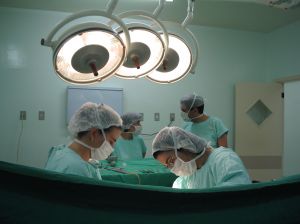Elective C-sections are a growing trend among mothers with 67% more first time mums in the U.S. choosing to have an elective C-section between 1991 and 2001. This is mostly because of our demanding careers and our constant need to be in control of every aspect of our lives, not to mention our insane fear of what could happen during a vaginal birth. However, a C-section is a major surgery and has many associated risks. For this reason, we must ask: do the potential advantages of an elective C-section actually outweigh its risks?
The advantages of an elective C-section
- The labour and birth process is less painful for the mother who will be under local anesthetic.
- No perineal tearing and a significantly lower risk of incontinence and sexual dysfunction in later life due to pelvic floor damage
- You have a fixed due date so you can organise yourself accordingly. This means making sure you family is present for the birth, the nursery is ready and your big day doesn’t clash with any other important events, among other things.
- Your baby is at a lower risk for fetal distress and oxygen deprivation which can occur during a vaginal birth.
- They are safer than emergency C-sections, which you may not be able to avoid during a vaginal birth.
- A study has revealed that women who have undergone C-sections are more satisfied with their sex lives much sooner after birth than women who delivered their babies vaginally.
This list leads you to believe that yes, an elective C-section is worth the risk. However, many medical professionals and organisations believe that women do not have thorough knowledge of the risks associated with an elective C-section in order to make an informed decision. Below you can find a list of these risks to help you decide.
The risks of an elective C-section
- The mother is a high risk for blood loss, blood clots, infections, re-hospitalization and damage to her internal organs, especially her bladder.
- There is a longer recovery period for the mother, who will have to remain in hospital for a few days after her baby’s birth. She will also not be able to begin exercising as early as a mother who delivers vaginally.
- If you have had a low risk pregnancy the possibility of infant mortality has been found to double.
- Many mothers say they feel as if they have missed out on the real birthing experience. There is no element of surprise and your doctor has more control over your body than you do.
- It is more likely that your next pregnancy will have to be delivered via C-section also as a vaginal birth after Caesarean (VBAC) is very risky. So if you don’t enjoy your first C-section experience you may have to endure it again.
- It is not recommended that you have more than 2 C-sections, because every C-section takes a significant toll on your body and puts each consequent pregnancy at a high risk for complications. This means there will be a limit to the number of children you can have.
- There is no guarantee against the complications associated with a vaginal birth, only a reduced risk.
- There is a very high risk of premature birth if your due date has been miscalculated.
The-pregnancy.net would like to know what you think. Do you believe the benefits of an elective C-section outweighs its risks? Or do you think it’s not worth the risk? Have you had a C-section before? If so, do you have any advice for expectant mums who are trying to decide what to do?

